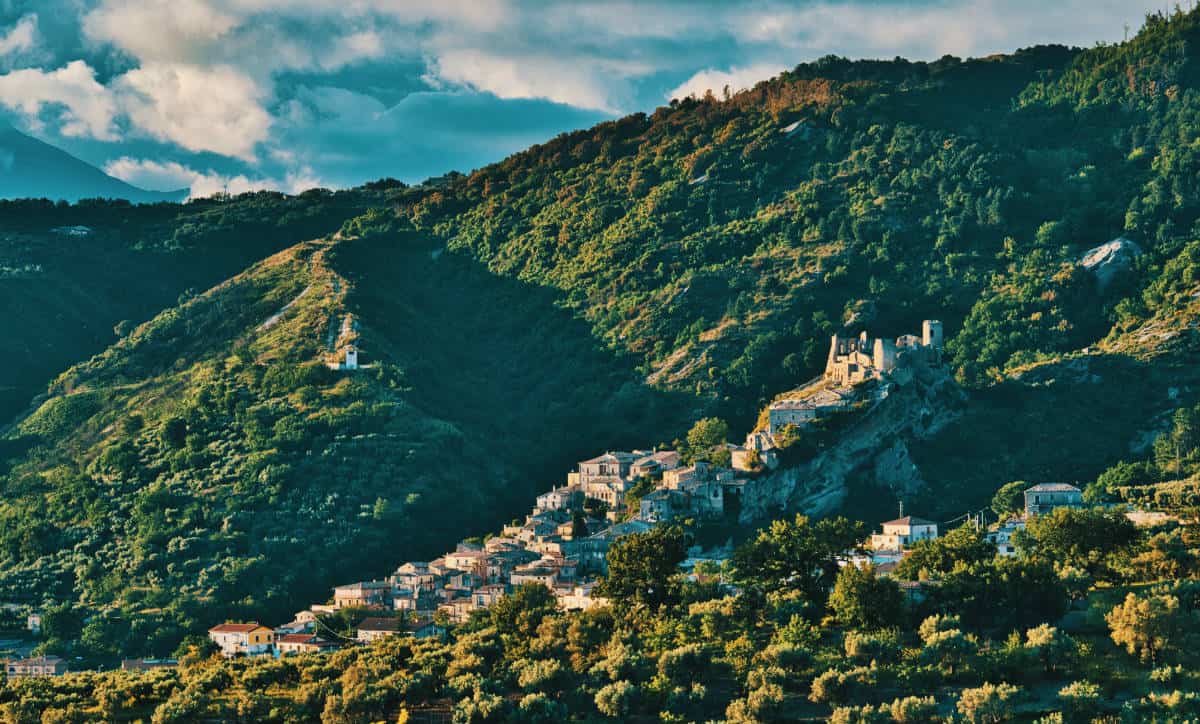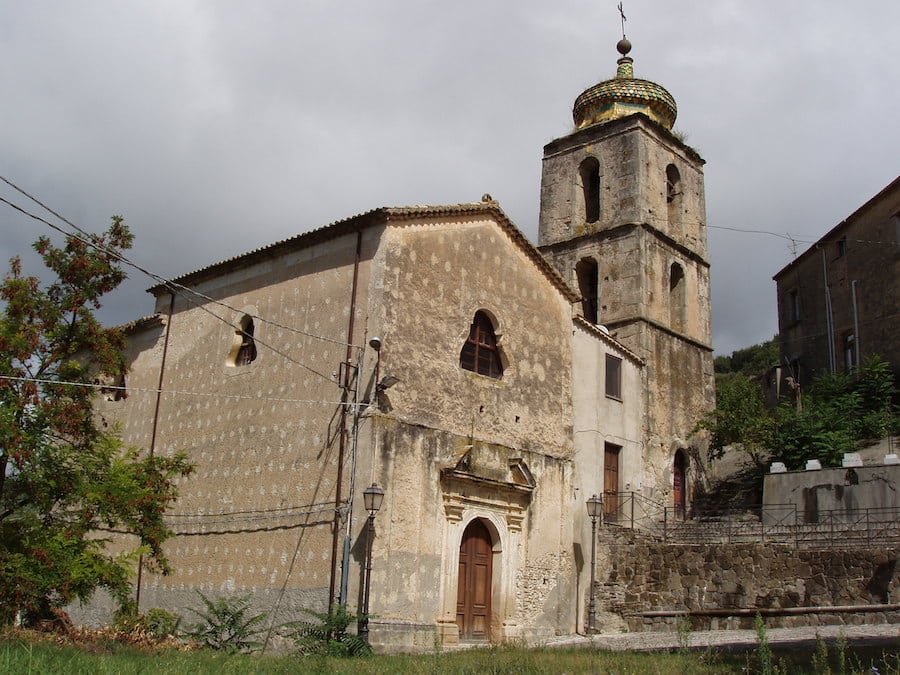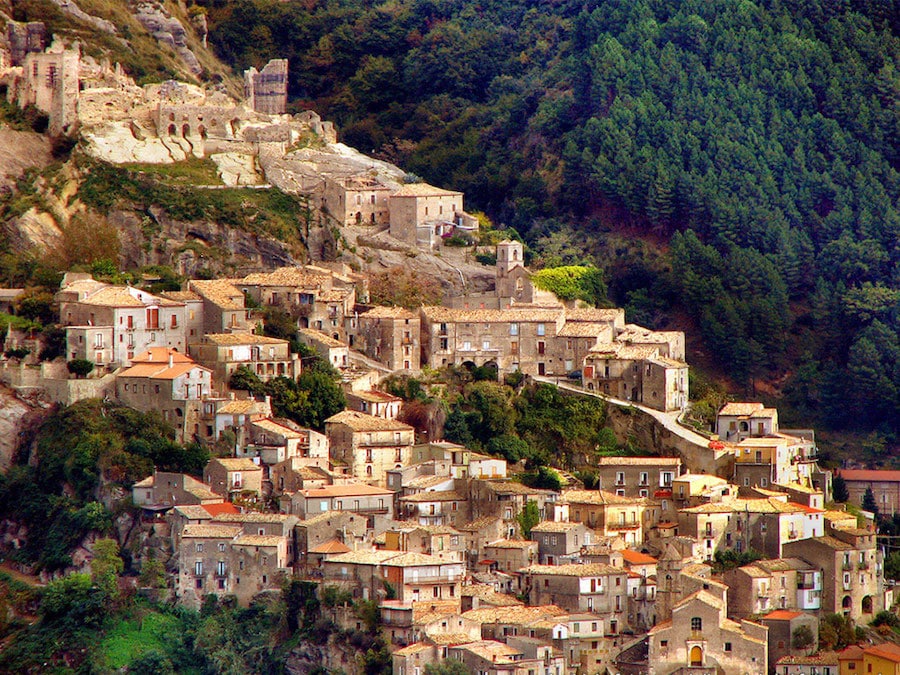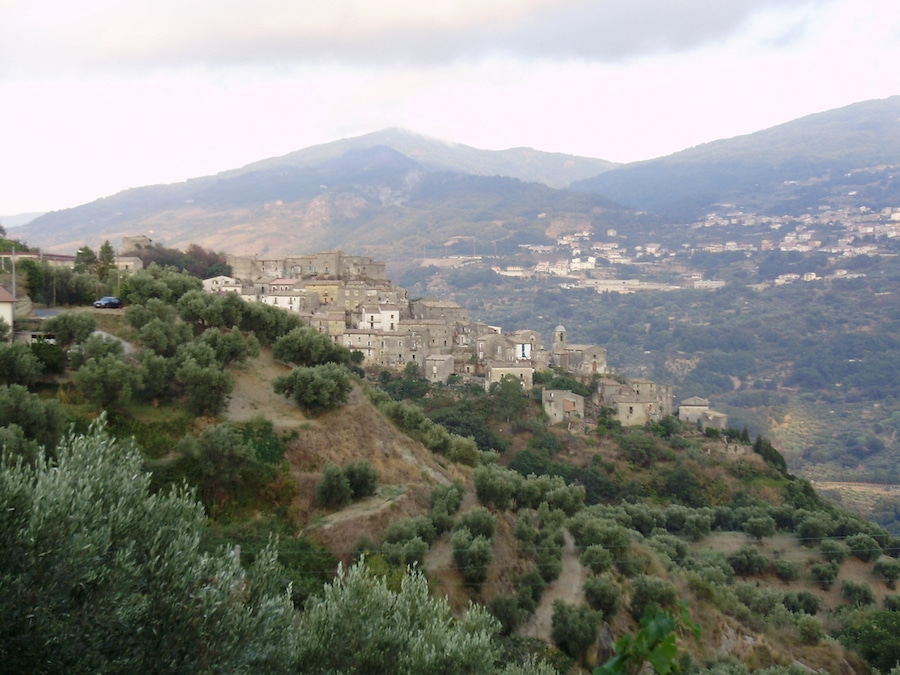In the period of the war of Troy, X century B.C., the Queen of the Amazons Pentasilea "was killed in battle by Achille, Cleta his nurse, who loved her with tenderness, as you hear the sad news, placed on a ship and accompanied by a lot of people, went with thought to be able to give a worthy burial". Thus, Cleta, handmaid of Enea "as it was in our seas came down to earth and or because he found impossible to accomplish the pitiful office or perhaps because the liked the amenities of the site decided not to go beyond, there stood and built the city that by his name was called Cleto" thus realizing the prophecy of Cassandra.
"The city grew of people and forces", so much so that at the time of the splendour of the Magna Greece went to war with Crotone (year 16 a.C.). The Crotoniati, with an army, and slew the Queen, which, before dying, he had to express the desire that all the queens that would have prevailed since you brought his name; thus "all the queens of the city were said Cleta".
Destroyed in 16 B.C. by the army of Crotone, Cleta knows a period of decline that you drag until the year one thousand, when the Calabria is constituted by a multitude of mountain villages, isolated and self-sufficient, that encircle a campaign abandoned and the coasts in prey to malaria.
The ancient Cleto Petramala (in the local dialect, Kletè Κλητή, in ancient Greek), during the Norman domination changed its name in Pietramala and the name remained until 1862 when it became Cleto. Even the name Pietramala conjectures are numerous, as well as to the possibility that the name derives from the feudal family, it thinks it has some bond with the position: Pietramala in the sense of "hard stone", bad, as writes Vincenzo Padula: "Pietra Grande, stone inaccessible in the form of a pyramid, (...) the sun ants can climb in Pietramala".
It can be assumed for the presence of a fortified inhabited already in the early medieval period, since they are attested in the Norman period news regarding the feud of Pietramala, linked to the Abbey of the Florense order of Fontelaurato. Become extremely important and influential, The abbey was the government of vast possessions and plots, beyond that to Fiumefreddo Bruzio, even at Pietramala, Savuto and Nocera Terinese, in whose territory boasted the possession of cultivations of "Turbolo", with houses and vineyards aggregates. These possessions, who ventured into the present territory of San Mango d'Aquino, were confirmed to the Abbey from Pope Clement IV in 1267, toward South beyond the River Savuto and north up to Fuscaldo.
At the same time as the growth of the Abbey assurgeva to increasingly important positions the town of Aiello Calabro, destined to become the center of a feudal state. The Barony of Petramala followed with alternate vicissitudes the history of the County of Aiello, which was an integral part together with other castles and farmhouses and from which will be able to obtain a certain political autonomy in the course of the centuries. The first feudal headers date back to the Swabian period, when the castle appears to be belonged first to Jacobus de Petramala and then to Goffredo of Petramala.
During the Angevin period Petramala, proves to be Casale of the state of Ajello together with other feuds and castles. The Calabria under the Angevins experienced a period of decadence, economic growth is arrested, spread the landed estates and when Charles I d'Angiò distributed the fiefs confiscated to the supporters of the house of Swabia held by the barons Calabrians and favored the nobles of Provence who had come to Italy to follow him. The revolt against the Angevin domination, broke out at the arrival in Italy of Corradino of Swabia (1268), the son of Frederick II, saw the resistance of Ajello and Amantea against Pietro Ruffo. But the avenger of Aiello John Brayda and the archbishop of Cosenza Tommaso da Lentini hired a large number of armed and reconquered cities, together with that of Arena, infierendo on "traitors".
In 1421 Luigi III d'Angiò appointment captain and the castellan of Aiello "John", giving it in fief dependencies of Pietramala, Lake and Savutello. The lands in the past property of Andrea, Nobile di Sorrento, and inherited by his daughter Antonia and her husband Artusio Pappacoda, were sold in 1425 to Giovanni Sersale Sorrento with the consent of Louis III through his Judge and Director Antonio Telesi.
During the Aragonese period the feud of Petramala, together with Lake and Savuto, is still in the employ of the state of Aiello. In the investiture of the fief of Ajello will happen two important families: the Sersale of Sorrento, casato in which distinguished the known Sansonetto, and the Spanish family of Siscar, Knights rewarded by sovereigns for their constant fidelity.
In 1442 Alfonso I, said the magnanimous, first the Aragonese king of Naples, he gave to his followers in the undertaking of the reconquest of the Kingdom, privileges and investiture of the feuds. With a document dated 24 July 1442, was granted the castellania capitania and Agello "pro if et heredibus suis" to nobleman Antonio Sersale of Sorrento, lord of Savutello, Petramala and lake.
In 1616 Petramala was to be owned as to consent the Regio of 2 January, to DR. Ercole Iannuccio or Giannuzzi. Under the Giannuzzi-Savelli Petramala had a considerable demographic increase passing from 825 inhabitants of 1644 to 1556 inhabitants of 1798, and became a barony independent, with autonomous life; it remained for more than a century, under the same lordship, until the abolition of the feudalìtà.
Pietramala participates in the Risorgimento movement against the Bourbon government with Nicola Pagliaro, accused in 1847 to conspire against state security, and with Federico Spanò and Luigi Zest, accused of complicity in a non regicidio. At the time of the Unification of Italy, Pietramala, which aggregates also the fraction of Savuto, arrives to count total 1.515 inhabitants and in 1863 the town changed its name in Cleto.
Certainly deserve a visit the Norman Castle and the Fountain Cece, in Pantano, exceptional archaeological reputation. In this area have been brought to light a tomb in cave dating back to the XIV century B.C. and two axs of copper dated at the end of the Neolithic.
The production of oil is one of the bases of the local economy, in addition to tourism and agriculture in general. Many are also the dishes and typical products.








